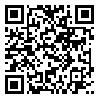BibTeX | RIS | EndNote | Medlars | ProCite | Reference Manager | RefWorks
Send citation to:
URL: http://salmandj.uswr.ac.ir/article-1-1117-en.html

 , Seyedeh Tayebeh Hatami2
, Seyedeh Tayebeh Hatami2 
 , Fatemeh Norouzi3
, Fatemeh Norouzi3 
 , Zakieh Gerivani3
, Zakieh Gerivani3 
 , Seyed Esmaeil Hatami4
, Seyed Esmaeil Hatami4 
 , Hadiseh Monadi Ziarat *5
, Hadiseh Monadi Ziarat *5 
 , Ahmad Delbari6
, Ahmad Delbari6 

2- Department of Environmental Health Engineering, School of Public Health, Hamadan University of Medical Sciences, Hamadan, Iran.
3- Department of Public Health, School of Health, North Khorasan University of Medical Sciences, Bojnurd, Iran.
4- Addiction and Behavioral Sciences Research Center, North Khorasan University of Medical Sciences, Bojnurd, Iran.
5- Addiction and Behavioral Sciences Research Center, North Khorasan University of Medical Sciences, Bojnurd, Iran. ,
6- Department of Neurobiology, Karolinska Institute, Stockholm, Sweden.
Objectives Falls are a major health problem and a leading cause of injury-related death and disabilities in the elderly. Therefore, the aim of this study was to survey fall prevalence and its related factors among the elderly in Bojnurd.
Methods & Materials This cross-sectional study was performed on 288 elderly residents in Bojnurd in 2015. By strata sampling, the elderly people were included in the study according to their population in each stratum by randomization. Data was collected by a self-made checklist that included demographic characteristics, history of falls in the last six months, and programs prevent of falls at habitat. Data were analyzed by independent-t and chi-square tests using SPSS 20 software.
Results The fall prevalence rate in elderly people was 30%. In total, 54.2% of samples were men and 45.8% were women, and the mean age was 70.42±8.56 years. Around 55.1% falls occurred in home or elderly care center. In this study, there was a significant correlation between fall prevalence and age over 60 years (P=0.01), consumption of hypnotic and sedative drugs (P=0.03), back pain (P=0.008), arthritis (P=0.03), problems with walking (P<0.001), problems with sitting and standing (P=0.009), hearing problems (P=0.02), environmental factors at home such as status stairs and railings (P<0.001), status cover the floors (p<0.001), status bathroom (P=0.01), status lavatory (P<0.001), and status lighting (P=0.02).
Conclusion Considering the prevalence of falls in elderly people and inadequate prevention measures at home, fall prevention programs should be considered seriously.
Received: 2016/02/11 | Accepted: 2016/06/19 | Published: 2016/09/22
| Rights and permissions | |
 |
This work is licensed under a Creative Commons Attribution-NonCommercial 4.0 International License. |




